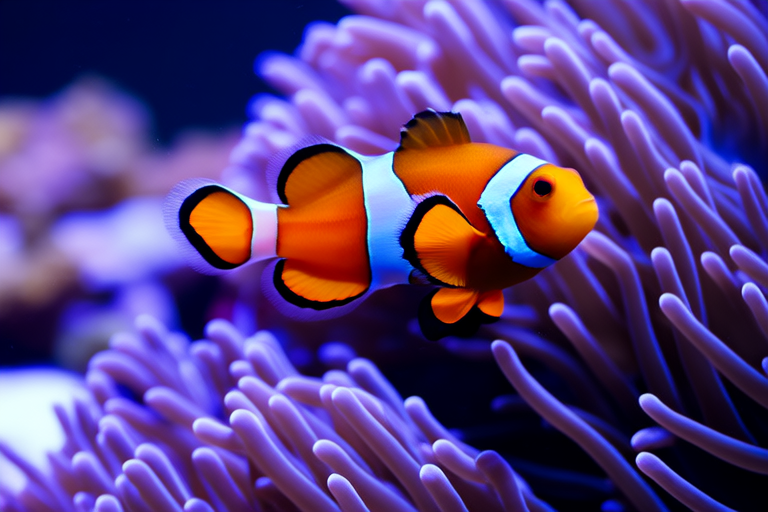From Nemo to Reality: What It’s Really Like to Own a Clownfish
Welcome to the vibrant world of saltwater aquariums! If you’re considering adding a clownfish to your underwater family, you’ve come to the right place. This article will guide you through the realities of owning a clownfish, dispelling some common myths and providing essential information about their care. Whether you’re a seasoned aquarist or a curious beginner, we’ll cover everything you need to know to ensure your new friend thrives in its new home.
The Realities of Clownfish Care
Clownfish, made famous by Disney’s Finding Nemo, have captured the hearts of many. However, owning one involves more than just setting up a tank and waiting for them to swim around. Proper care is crucial for their health and happiness.
Care Requirements
Clownfish require specific environmental conditions to thrive. They are tropical fish that prefer water temperatures between 74°F and 82°F (23°C to 28°C). Maintaining stable temperature and pH levels (8.1 to 8.4) is vital. A good quality heater and a reliable thermometer are necessary tools for any clownfish owner.
Water quality is another critical aspect. Regular partial water changes, typically 10-20% every week, help keep the tank clean and free from harmful substances like ammonia and nitrite. A robust filtration system also plays a key role in maintaining water clarity and reducing waste.
Common Myths vs. Reality Based on Finding Nemo
Many people mistakenly believe that clownfish can live in freshwater tanks or that they are easy to take care of. In reality, clownfish are marine fish and require saltwater environments. They are also sensitive to changes in their surroundings, making them less suitable for inexperienced aquarists.
Another myth is that clownfish always live with sea anemones. While some species of clownfish do have symbiotic relationships with certain types of anemones in the wild, this isn’t necessary for their survival in captivity. Many clownfish owners choose not to include anemones due to their difficulty in care and potential harm to other tank inhabitants.
Suitable Tank Conditions
Setting up the perfect habitat for your clownfish is crucial. A minimum tank size of 20 gallons is recommended for a single clownfish, but larger tanks provide more space for swimming and exploration. Clownfish enjoy hiding spots and caves, so incorporating live rock or artificial structures into the tank design is beneficial.
Lighting is also important. Clownfish are diurnal, meaning they are active during the day. A full-spectrum LED light with a timer ensures consistent lighting cycles, mimicking natural daylight.
Diet Specifics
Feeding your clownfish a balanced diet is essential for their well-being. In the wild, clownfish eat small crustaceans, algae, and leftover food from their anemone hosts. In captivity, they thrive on a variety of high-quality flake foods, pellets, and frozen or freeze-dried brine shrimp, mysis shrimp, and bloodworms. It’s important to vary their diet to ensure they receive all necessary nutrients.
Avoid overfeeding, as excess food can pollute the water and lead to health issues. Feed your clownfish two to three times a week, offering only what they can consume within a few minutes.
Interaction Levels with Owners
While clownfish won’t leap out of the water to greet you like a dog, they can become accustomed to their owners and even show signs of recognition. Some clownfish may swim towards the front of the tank when they see their caretaker approaching, especially if feeding time is involved.
However, it’s important to remember that clownfish are not interactive pets in the same way as dogs or cats. Their primary interactions will be with their tank environment and possibly other tankmates.
Tips for First-Time Saltwater Aquarium Enthusiasts
If you’re new to saltwater aquariums, there are several steps you can take to set yourself up for success:
- Research thoroughly: Before purchasing any equipment or fish, spend time learning about saltwater aquarium maintenance, water chemistry, and fish behavior.
- Start small: Begin with a smaller tank to get a feel for the demands of saltwater aquarium keeping before moving on to larger setups.
- Choose compatible tankmates: Not all fish are suitable companions for clownfish. Research potential tankmates carefully to avoid introducing aggressive or incompatible species.
- Invest in quality equipment: High-quality filters, heaters, and testing kits will make your life easier and improve the overall health of your tank.
- Be patient: Establishing a stable tank takes time. Don’t rush the process, and be prepared for some trial and error along the way.
Conclusion
Owning a clownfish can be a rewarding experience, bringing joy and beauty to your home. By understanding their needs and providing proper care, you can create a thriving environment for these fascinating creatures. Remember, while clownfish are captivating and popular, they require dedicated attention and resources. With the right setup and knowledge, you’ll be well on your way to enjoying a wonderful relationship with your new aquatic friend.
Happy fishkeeping!
